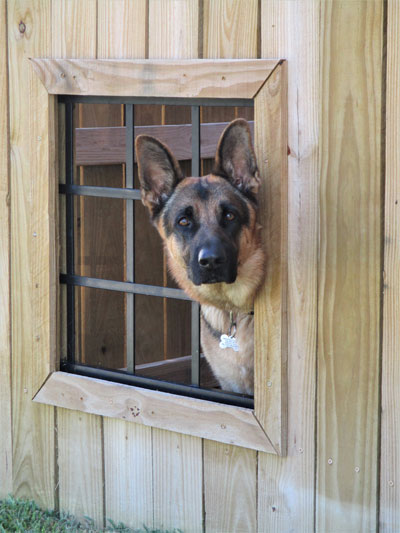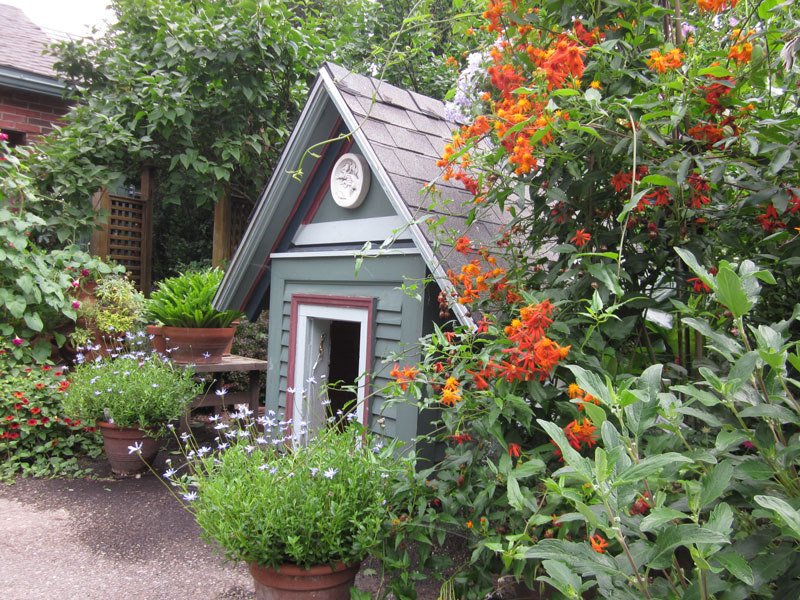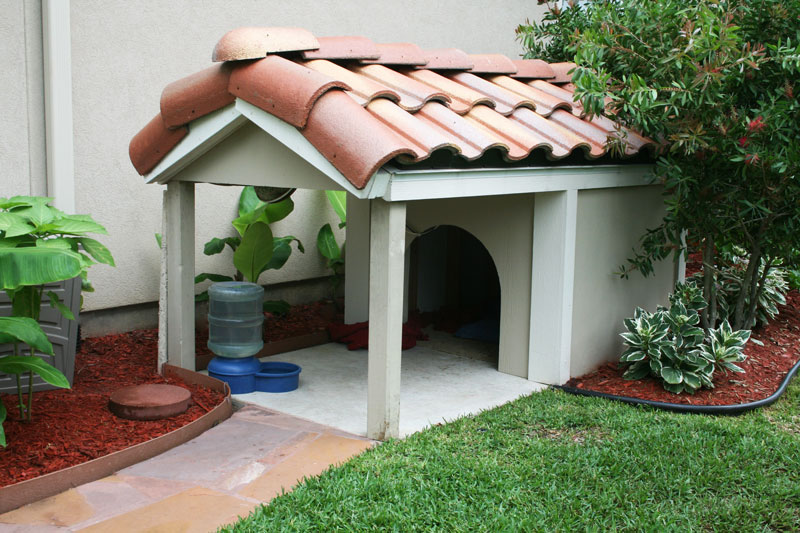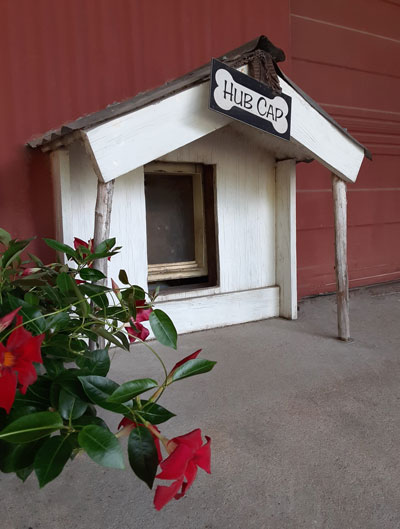In the doghouse … and lovin’ it! – by Diane Morey Sitton

When it comes to man’s best friend, no amount of pampering is enough … just take a look at doghouses.
These days, there are doghouses that are equipped with lights, fans, and an assortment of beds, heaters, and other solar-powered accessories that keep Fido cool in summer and warm in winter.
But insuring Fido’s comfort is only the beginning. Design, too, has tails wagging.

Besides basic peak-roof models (Snoopy’s favorite), there are doghouses that resemble barns, boxes, and dome-shaped igloos. Covered porches and second level observation decks are common. There are walk-through models with front doors and back doors. There are duplex doghouses that accommodate a dog and his buddy.

As if that isn’t enough, some homeowners hire builders to construct custom-designed dog “houses” that are replicas of their own homes.
It’s hard to say whether Fido appreciates the ornate patterns of Victorian gingerbread, the nearly flat facades of Colonial structures, or the stucco exteriors and red-tile roofs of Spanish styling, but one way or the other, these mini-me doghouses unify landscapes and make dog-lovers happy.
But doggie digs haven’t always been stylish or even comfortable. The earliest known doghouses were primitive mud huts. Later, ruff-and-ready doghouses became the norm. Folks cobbled together the ragtag shelters using whatever scrap material they could sniff out.
By the nineteenth century — thanks to the Industrial Revolution – factory-produced doghouses offered an alternative to the makeshift structures from before. In the 1960s, plastic models became top dog. They were valued for their durability, weather resistance, and the fact that dog owners could hose down the doghouse at the same time they washed the dog.
Today, doghouses are constructed from a variety of materials including repurposed wood pallets, plywood, Hardie board siding, and plastic. Do-it-yourselfers can purchase doghouse kits, watch “how-to” videos, or order online plans that include diagrams and building instructions.

But whether it’s commercially constructed or assembled at home from a kit, positioning the doghouse where it is protected from direct sun, wind, and run-off water will help make Fido’ s time outdoors as dog-friendly as possible. Nobody likes to sleep on a cold, damp floor, so build the doghouse off the ground. Elevate commercially-built models using bricks, pavers, or landscaping timbers.
If Fido could talk, he’d probably tell you that although he appreciates a doghouse where he can be warm in winter, cool in summer, and dry year round, he also craves fresh air and enough room to stand up, turn around, lie down, and stretch out. He’d like an offset door to minimize his exposure to wind and rain, or a vinyl door flap that would keep wind, rain and cold air outside. He’d like a simple doormat: he thinks it might help catch leaves and other debris. He’d also appreciate a rug, cozy blanket, or bed of straw or cedar shavings.

Fido might also tell you that he’d like the doghouse to be near the house so he doesn’t miss a chance to chase a stick, fetch a ball, jump for a Frisbee, or get a pat on the head.
